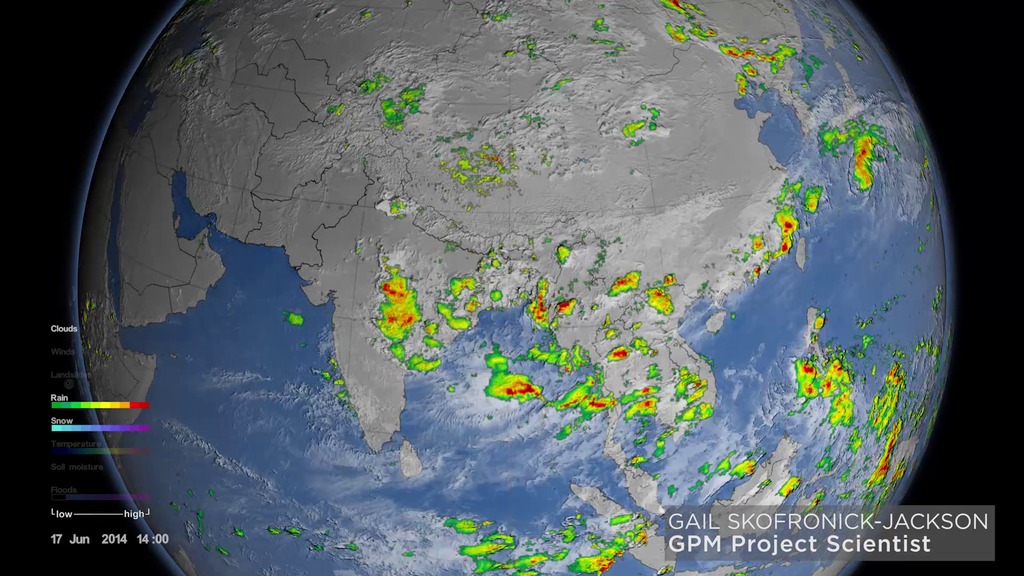The Science of Monsoons

A colorful, data-driven view into how monsoons work.
When you hear the word “monsoon,” images of floods and torrential rains may come to mind. But monsoons can also include intense periods of dryness. A monsoon is a seasonal change in wind and rain patterns observed in certain parts of the world. The changes are driven by seasonal shifts in the temperature differences between the ocean and land. Across the Indian subcontinent and Southeast Asia, the summer and winter monsoons dominate the region’s climate. Between April and September, warm land temperatures drive pressure patterns and winds that draw in moist air from the Indian Ocean, producing heavy rainfall. During the winter months, the winds move in the opposite direction, blowing cool air over land toward the ocean, leading to very dry conditions. Using computer models and data collected by satellites, scientists are able to study monsoon cycles in great detail and monitor their impacts on humans and the environment. Watch the video for a tour of Earth's monsoon regions.
This visualization uses satellite and modeled data to show how monsoons develop in different regions of the globe.

In southern and Southeast Asia, summer monsoon rains provide the water needed for growing rice and other crops.

Excessive rainfall during the summer monsoon season can have a devastating impact, causing severe flooding.

Measurements from Earth-observing satellites like NASA's GPM mission (shown above) help scientists to study monsoons and their effects from space.
Credits
Please give credit for this item to:
NASA's Goddard Space Flight Center
-
Writer
- None None (NASA Viz Team)
-
Producer
- Ryan Fitzgibbons (USRA)
-
Animators
- Greg Shirah (NASA/GSFC)
- Horace Mitchell (NASA/GSFC)
- Alex Kekesi (Global Science and Technology, Inc.)
- Lori Perkins (NASA/GSFC)
-
Scientists
- Gail Skofronick Jackson (NASA/GSFC)
- Dalia B Kirschbaum (NASA/GSFC)
- George Huffman (NASA/GSFC)
Release date
This page was originally published on Thursday, July 7, 2016.
This page was last updated on Wednesday, May 3, 2023 at 1:48 PM EDT.
